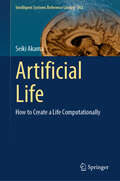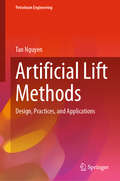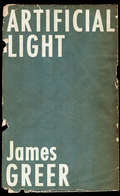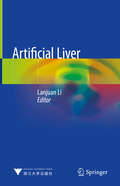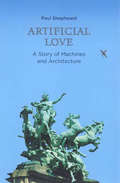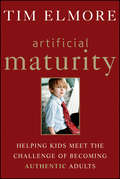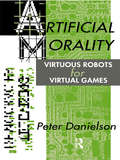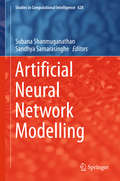- Table View
- List View
Artificial Life and Evolutionary Computation: 15th Italian Workshop, WIVACE 2021, Winterthur, Switzerland, September 15–17, 2021, Revised Selected Papers (Communications in Computer and Information Science #1722)
by Johannes Josef Schneider Mathias Sebastian Weyland Dandolo Flumini Rudolf Marcel FüchslinThis book constitutes the proceedings of the 15th Italian Workshop on Artificial Life and Evolutionary Computation, WIVACE 2021, held in Winterthur, Switzerland, in September 2022. The 14 full papers and 10 short papers presented in this volume were carefully reviewed and selected from 25 submissions. The papers are organized in the following topical sections: Networks; Droplets, Fluids, and Synthetic Biology; Robot Systems; Computer Vision and Computational Creativity; Semantic Search; Artificial Medicine and Pharmacy; Trade and Finance; Ethics in Computational Modelling.
Artificial Life and Evolutionary Computation: 16th Italian Workshop, WIVACE 2022, Gaeta, Italy, September 14–16, 2022, Revised Selected Papers (Communications in Computer and Information Science #1780)
by Leonardo Vanneschi Claudio De Stefano Francesco FontanellaThis book constitutes the refereed proceedings of the 16th Italian Workshop on Artificial Life and Evolutionary Computation, WIVACE 2022, held in Gaeta, Italy, during September 14–16, 2022. The 21 full papers and 3 short papers included in this book were carefully reviewed and selected from 45 submissions. They were organized in topical sections as follows: answer set programming; networks and complex systems, metaheuristics, robotics, and machine learning
Artificial Life and Evolutionary Computation: 17th Italian Workshop, WIVACE 2023, Venice, Italy, September 6–8, 2023, Revised Selected Papers (Communications in Computer and Information Science #1977)
by Stefano Cagnoni Marco Villani Roberto SerraThis book constitutes the refereed post proceedings of the 17th Italian Workshop on Artificial Life and Evolutionary Computation, WIVACE 2023, held in Venice, Italy, during September 6–8, 2023.The 30 full papers included in this book were carefully reviewed and selected from 55 submissions. They were organized in topical sections as follows: Algorithms for complex systems, Biologically inspired models, Complex chemical systems, Adaptation and swarms, Learning, Medicine and Social systems.
Artificial Life and Intelligent Agents: First International Symposium, ALIA 2014, Bangor, UK, November 5-6, 2014. Revised Selected Papers (Communications In Computer And Information Science #732)
by Christopher J. Headleand Peter R. Lewis Panagiotis D. Ritsos Steve BattleThis book constitutes the refereed proceedings of the Second International Symposium on Artificial Life and Intelligent Agents, ALIA 2016, held in Birmingham, UK, in June 2016. The 8 revised full papers and three revised short papers presented together with two demo papers were carefully reviewed and selected from 25 submissions. The papers are organized in topical sections on modelling; robotics; bio-inspired problem solving; human-like systems; applications and games.
Artificial Life and Intelligent Agents: First International Symposium, ALIA 2014, Bangor, UK, November 5-6, 2014. Revised Selected Papers (Communications in Computer and Information Science #519)
by Christopher J. Headleand William J. Teahan Llyr Ap CenyddThis book constitutes the refereed proceedings of the First International Symposium on Artificial Life and Intelligent Agents, ALIA 2014, held in Bangor, UK, in November 2014. The 10 revised full papers were carefully reviewed and selected from 20 submissions. The papers are organized in topical sections on learning and evolution; human interaction; robotic simulation.
Artificial Life: How to Create a Life Computationally (Intelligent Systems Reference Library #262)
by Seiki AkamaThis book provides some resources of Artificial Life. Artificial Life (ALife or A-Life) is the research area which simulates a life computationally. It involves several approaches to living systems in artificial manners. It was recognized as a scientific field in the 1980's. Artificial Life is related to many scientific fields including biology and computer science, and its history is old. In fact, the earlier works have been done by people like Turing and von Neumann. Fields like that neural networks, evolutionary computation, and cellular automaton constitute the foundations for Artificial Life. The so-called wet ware is an approach in more biology-oriented, which is known that there are some Artificial Life Systems at present. It is expected to see further progresses of this exciting field. The materials include: history, philosophy, related areas, recent developments, etc. Starting from the overview, the authors give an exposition of basic subjects like cellular automaton, neural networks, evolutionary computation, and wet ware. The authors also introduce some examples of Artificial Life Systems like Boids, Tierra, and Open Warm. The book is intended for those, like experts and students, who wish to get involved in the field as a monograph or a textbook for the subject. It is also useful for beginners. But, the authors assume that the reader has mastered the material ordinarily covered in AI and mathematics.
Artificial Life: The Quest for a New Creation
by Steven LevyBiologists, mathematicians, and computer scientists learn what computers can do when given the opportunity to "think".
Artificial Lift Methods: Design, Practices, and Applications (Petroleum Engineering)
by Tan NguyenThis book details the major artificial lift methods that can be applied to hydrocarbon reservoirs with declining pressure. These include: the sucker rod pump, gas lift, electrical submersible pump, progressive cavity pump, and plunger lift. The design and applications, as well as troubleshooting, are discussed for each method, and examples, exercises and design projects are provided in order to support the concepts discussed in each chapter. The problems associated with oil recovery in horizontal wells are also explored, and the author proposes solutions to address the various extraction challenges that these wells present. The book represents a timely response to the difficulties associated with unconventional oil sources and declining wells, offering a valuable resource for students of petroleum engineering, as well as hydrocarbon recovery researchers and practicing engineers in the petroleum industry.
Artificial Light (Little House on the Bowery)
by James Greer&“Artificial Light beats the bejeezus out of the last dozen Thomas Pynchons, the last nineteen Don DeLillos, and the last forty-three Kurt Vonneguts.&”—Richard Meltzer &“In his ambitious and intriguing debut novel, indie rock expert Greer, author of Guided by Voices, employs one of literature's oldest gambits, the book-within-a-book structure, three times over. A young librarian calling herself Fiat Lux fills a set of notebooks with her passion for books and an enigmatic account of her interlude with Kurt C, a famous indie rock star who appears unheralded in Dayton, Ohio, and buys the long-abandoned Orville Wright mansion. A member of the rock group Whiskey Ships is trying to write about his musical odyssey but longs to return to his book about Orville Wright, whose long-lost diaries also feed the narrative stream. Greer picks the lock on the Kurt Cobain mythos and the rapid commercialization of indie rock…Strong writing and shrewd perceptions prevail, backed by wry humor, compelling stumblebum characters, a true-blue louche atmosphere, and arresting insights into the dream of art, be it literature or rock and roll.&”—Booklist
Artificial Liver
by Lanjuan LiThis book introduces the clinical application of artificial liver system (ALS) in hepatic failure. It has been widely used in clinics aiming to provide temporary support of liver function while maintaining extra-hepatic function in patients with liver failure. This work comprehensively summarizes the progress of livers and artificial liver, for example, the principle and implementation of Li-ALS, cell transplantation and the combined application of artificial liver and liver transplantation. It will be helpful for clinicians to implement artificial liver treatment to save the lives of patients with hepatic failure.
Artificial Love: A Story of Machines and Architecture (The\mit Press Ser.)
by Paul ShepheardA vision of architecture that includes sculpture, machines, and technology and encapsulates the history of the human species.According to Paul Shepheard, architecture is the rearranging of the world for human purposes. Sculpture, machines, and landscapes are all architecture-every bit as much as buildings are. In his writings, Shepheard examines old assumptions about architecture and replaces the critical theory of the academic with the active theory of the architect-citizen enamored of the world around him.Artificial Love weaves together three stories about architecture into one. The first, about machines as architecture, leads to speculations about technology and the human condition and to the assertion that machines are the sculptures of today. The second story is about the ways that architecture reflects the tribal and personal desires of those who make it. In the West, ideas of community, multiculturalism, and globalization compete furiously, leaving architecture to exist as it always has, as the past in the present. The third story features individual people experiencing their lives in the context of architecture. Here, Shepheard borrows the rhetorical device of Shakespeare's seven ages of man to propose that each person's life imitates the accumulating history of the human species. Shepheard's version of the history of humans is a technological one, in which machines become sculpture and sculpture becomes architecture. For Shepheard, our machines do not separate us from nature. Rather, our technology is our nature, and we cannot but be in harmony with nature. The change that we have wrought in the world, he says, is a wonderful and powerful thing.
Artificial Materials (Wiley-iste Ser.)
by Olivier VanbésienThis book addresses artificial materials including photonic crystals (PC) and metamaterials (MM). The first part is devoted to design concepts: negative permeability and permittivity for negative refraction, periodic structures, transformation optics. The second part concerns PC and MM in stop band regime: from cavities, guides to high impedance surfaces. Abnormal refraction, less than one and negative, in PC and MM are studied in a third part, addressing super-focusing and cloaking. Applications for telecommunications, lasers and imaging systems are also explored.
Artificial Mathematical Intelligence: Cognitive, (Meta)mathematical, Physical and Philosophical Foundations
by Danny A. Gómez RamírezThis volume discusses the theoretical foundations of a new inter- and intra-disciplinary meta-research discipline, which can be succinctly called cognitive metamathematics, with the ultimate goal of achieving a global instance of concrete Artificial Mathematical Intelligence (AMI). In other words, AMI looks for the construction of an (ideal) global artificial agent being able to (co-)solve interactively formal problems with a conceptual mathematical description in a human-style way. It first gives formal guidelines from the philosophical, logical, meta-mathematical, cognitive, and computational points of view supporting the formal existence of such a global AMI framework, examining how much of current mathematics can be completely generated by an interactive computer program and how close we are to constructing a machine that would be able to simulate the way a modern working mathematician handles solvable mathematical conjectures from a conceptual point of view. The thesis that it is possible to meta-model the intellectual job of a working mathematician is heuristically supported by the computational theory of mind, which posits that the mind is in fact a computational system, and by the meta-fact that genuine mathematical proofs are, in principle, algorithmically verifiable, at least theoretically. The introduction to this volume provides then the grounding multifaceted principles of cognitive metamathematics, and, at the same time gives an overview of some of the most outstanding results in this direction, keeping in mind that the main focus is human-style proofs, and not simply formal verification. The first part of the book presents the new cognitive foundations of mathematics’ program dealing with the construction of formal refinements of seminal (meta-)mathematical notions and facts. The second develops positions and formalizations of a global taxonomy of classic and new cognitive abilities, and computational tools allowing for calculation of formal conceptual blends are described. In particular, a new cognitive characterization of the Church-Turing Thesis is presented. In the last part, classic and new results concerning the co-generation of a vast amount of old and new mathematical concepts and the key parts of several standard proofs in Hilbert-style deductive systems are shown as well, filling explicitly a well-known gap in the mechanization of mathematics concerning artificial conceptual generation.
Artificial Maturity
by Tim ElmoreHow to raise kids who can handle the real worldToday's Generation iY (teens brought up with the Internet) and Homelanders (children born after 9/11) are overexposed to information at an earlier age than ever and paradoxically are underexposed to meaningful relationships and real-life experiences. Artificial Maturity addresses the problem of what to do when parents and teachers mistake children's superficial knowledge for real maturity. The book is filled with practical steps that adults can take to furnish the experiences kids need to balance their abilities with authentic maturity.Shows how to identify the problem of artificial maturity in Generation iY and HomelandersReveals what to do to help children balance autonomy, responsibility, and informationIncludes a down-to-earth model for coaching and guiding youth to true maturityArtificial Maturity gives parents, teachers, and others who work with youth a manual for understanding and practicing the leadership kids so desperately need to mature in a healthy fashion.
Artificial Metalloenzymes and MetalloDNAzymes in Catalysis: From Design to Applications
by Montserrat Diéguez Jan-E. Bäckvall Oscar PàmiesAn important reference for researchers in the field of metal-enzyme hybrid catalysis Artificial Metalloenzymes and MetalloDNAzymes in Catalysis offers a comprehensive review of the most current strategies, developed over recent decades, for the design, synthesis, and optimization of these hybrid catalysts as well as material about their application. The contributors—noted experts in the field—present information on the preparation, characterization, and optimization of artificial metalloenzymes in a timely and authoritative manner. The authors present a thorough examination of this interesting new platform for catalysis that combines the excellent selective recognition/binding properties of enzymes with transition metal catalysts. The text includes information on the various applications of metal-enzyme hybrid catalysts for novel reactions, offers insights into the latest advances in the field, and contains an informative perspective on the future: Explores the development of artificial metalloenzymes, the modern and strongly evolving research field on the verge of industrial application Contains a comprehensive reference to the research area of metal-enzyme hybrid catalysis that has experienced tremendous growth in recent years Includes contributions from leading researchers in the field Shows how this new catalysis combines the selective recognition/binding properties of enzymes with transition metal catalysts Written for catalytic chemists, bioinorganic chemists, biochemists, and organic chemists, Artificial Metalloenzymes and MetalloDNAzymes in Catalysis offers a unique reference to the fundamentals, concepts, applications, and the most recent developments for more efficient and sustainable synthesis.
Artificial Misinformation: Exploring Human-Algorithm Interaction Online
by Donghee ShinThis book serves as a guide to understanding the dynamics of AI in human contexts with a specific focus on the generation, sharing, and consumption of misinformation online. How do humans and AI interact? How is AI shaping our understanding of ourselves and our societies? What are the interaction mechanisms that govern how humans and algorithms contribute to misinformation online? And how do we bridge the gap between ethical considerations and practical realities to make responsible, reliable systems? Exploring these questions, the book empowers humans to make AI design choices that allow them meaningful control over AI and the online sphere. Calling for an interdisciplinary approach toward human-misinformation algorithmic interaction that focuses on building methods and tools that robustly deal with complex psychological/social phenomena, the book offers a compelling insight into the future of AI-based society.
Artificial Morality: Virtuous Robots for Virtual Games
by Peter DanielsonThis book explores the role of artificial intelligence in the development of a claim that morality is person-made and rational. Professor Danielson builds moral robots that do better than amoral competitors in a tournament of games like the Prisoners Dilemma and Chicken. The book thus engages in current controversies over the adequacy of the received theory of rational choice. It sides with Gauthier and McClennan, who extend the devices of rational choice to include moral constraint. Artificial Morality goes further, by promoting communication, testing and copying of principles and by stressing empirical tests.
Artificial Muscles: Applications of Advanced Polymeric Nanocomposites
by Mohsen ShahinpoorSmart materials are the way of the future in a variety of fields, from biomedical engineering and chemistry to nanoscience, nanotechnology, and robotics. Featuring an interdisciplinary approach to smart materials and structures, this second edition of Artificial Muscles: Applications of Advanced Polymeric Nanocomposites has been fully updated to thoroughly review the latest knowledge of ionic polymeric conductor nanocomposites (IPCNCs), including ionic polymeric metal nanocomposites (IPMNCs) as biomimetic distributed nanosensors, nanoactuators, nanotransducers, nanorobots, artificial muscles, and electrically controllable intelligent polymeric network structures. Authored by one of the founding fathers of the field, the book introduces fabrication and manufacturing methods of several electrically and chemically active ionic polymeric sensors, actuators, and artificial muscles, as well as a new class of electrically active polymeric nanocomposites and artificial muscles. It also describes a few apparatuses for modeling and testing various artificial muscles to show the viability of chemoactive and electroactive muscles. It presents the theories, modeling, and numerical simulations of ionic polymeric artificial muscles’ electrodynamics and chemodynamics and features current industrial and medical applications of IPMNCs. By covering the fabrication techniques of and novel developments in advanced polymeric nanocomposites, this second edition continues to provides an accessible yet solid foundation to the subject while stimulating further research. Key features: Fully up to date with the latest cutting-edge discoveries in the field Authored by a world expert in the subject area Explores the exciting and growing topic of smart materials in medicine Mohsen Shahinpoor is Professor of Mechanical Engineering at the University of Maine and a leading expert in artificial muscles.
Artificial Neural Network Applications for Software Reliability Prediction
by Neeraj Kumar Goyal Manjubala BisiArtificial neural network (ANN) has proven to be a universal approximator for any non-linear continuous function with arbitrary accuracy. This book presents how to apply ANN to measure various software reliability indicators: number of failures in a given time, time between successive failures, fault-prone modules and development efforts. The application of machine learning algorithm i.e. artificial neural networks application in software reliability prediction during testing phase as well as early phases of software development process is presented as well. Applications of artificial neural network for the above purposes are discussed with experimental results in this book so that practitioners can easily use ANN models for predicting software reliability indicators.
Artificial Neural Network Modelling (Studies in Computational Intelligence #628)
by Subana Shanmuganathan Sandhya SamarasingheThis book covers theoretical aspects as well as recent innovativeapplications of Artificial Neural networks (ANNs) in natural, environmental,biological, social, industrial and automated systems. It presents recent results of ANNs in modelling small, largeand complex systems under three categories, namely, 1) Networks, Structure Optimisation, Robustness and Stochasticity 2) Advances in Modelling Biological andEnvironmental Systems and 3) Advancesin Modelling Social and Economic Systems. The book aims at serving undergraduates, postgraduates and researchersin ANN computational modelling.
Artificial Neural Network-based Designs of Prestressed Concrete and Composite Structures
by Won‐Kee HongThis book introduces artificial neural network (ANN)-based Lagrange optimization techniques for a structural design of prestressed concrete structures based on Eurocode 2, and composite structures based on American Institute of Steel Construction and American Concrete Institute standards. The book provides robust design charts for prestressed concrete structures, which are challenging to achieve using conventional design methods.Using ANN-based design charts, the holistic design of a post-tensioned beam is performed to optimize design targets (objective functions), while calculating 21 forward outputs, in arbitrary sequences, from 21 forward inputs. Applies the powerful tools of ANN to the optimization of prestressed concrete structures and composite structures including columns and beams Multi-objective optimizations (MOO) of prestressed concrete beams are performed using an ANN-based Lagrange algorithm Offers a Pareto frontier using an ANN-based MOO for composite beams and composite columns sustaining multi-biaxial loads Heavily illustrated in color and with diverse practical design examples in line with EC2, ACI, and ASTM codes The book offers optimal solutions for structural designers and researchers, enabling readers to construct design charts to minimize their own design targets under various design requirements based on any design code.
Artificial Neural Network-based Optimized Design of Reinforced Concrete Structures
by Won‐Kee HongArtificial Neural Network-based Optimized Design of Reinforced Concrete Structures introduces AI-based Lagrange optimization techniques that can enable more rational engineering decisions for concrete structures while conforming to codes of practice. It shows how objective functions including cost, CO2 emissions, and structural weight of concrete structures are optimized either separately or simultaneously while satisfying constraining design conditions using an ANN-based Lagrange algorithm. Any design target can be adopted as an objective function. Many optimized design examples are verified by both conventional structural calculations and big datasets. Uniquely applies the new powerful tools of AI to concrete structural design and optimization Multi-objective functions of concrete structures optimized either separately or simultaneously Design requirements imposed by codes are automatically satisfied by constraining conditions Heavily illustrated in color with practical design examples The book suits undergraduate and graduate students who have an understanding of collegelevel calculus and will be especially beneficial to engineers and contractors who seek to optimize concrete structures.
Artificial Neural Networks (Methods in Molecular Biology #1260)
by Hugh CartwrightThis volume presents examples of how ANNs are applied in biological sciences and related areas. Chapters focus on the analysis of intracellular sorting information, prediction of the behavior of bacterial communities, biometric authentication, studies of Tuberculosis, gene signatures in breast cancer classification, use of mass spectrometry in metabolite identification, visual navigation, and computer diagnosis. Written in the highly successful Methods in Molecular Biology series format, chapters include introductions to their respective topics, application details for both the expert and non-expert reader, and tips on troubleshooting and avoiding known pitfalls. Authoritative and practical, Artificial Neural Networks: Second Edition aids scientists in continuing to study Artificial Neural Networks (ANNs).
Artificial Neural Networks (Methods in Molecular Biology #2190)
by Hugh CartwrightThis volume presents examples of how Artificial Neural Networks (ANNs) are applied in biological sciences and related areas. Chapters cover a wide variety of topics, including the analysis of intracellular sorting information, prediction of the behavior of bacterial communities, biometric authentication, studies of Tuberculosis, gene signatures in breast cancer classification, the use of mass spectrometry in metabolite identification, visual navigation, and computer diagnosis. Written in the highly successful Methods in Molecular Biology series format, chapters include introductions to their respective topics, application details for both the expert and non-expert reader, and tips on troubleshooting and avoiding known pitfalls. Authoritative and practical, Artificial Neural Networks: Third Edition should be of value to all scientists interested in the hands-on application of ANNs in the biosciences.
Artificial Neural Networks and Machine Learning – ICANN 2016: 25th International Conference on Artificial Neural Networks, Barcelona, Spain, September 6-9, 2016, Proceedings, Part I (Lecture Notes in Computer Science #9886)
by Alessandro E.P. Villa Paolo Masulli Antonio Javier Pons RiveroThe two volume set, LNCS 9886 + 9887, constitutes the proceedings of the 25th International Conference on Artificial Neural Networks, ICANN 2016, held in Barcelona, Spain, in September 2016. The 121 full papers included in this volume were carefully reviewed and selected from 227 submissions. They were organized in topical sections named: from neurons to networks; networks and dynamics; higher nervous functions; neuronal hardware; learning foundations; deep learning; classifications and forecasting; and recognition and navigation. There are 47 short paper abstracts that are included in the back matter of the volume.





